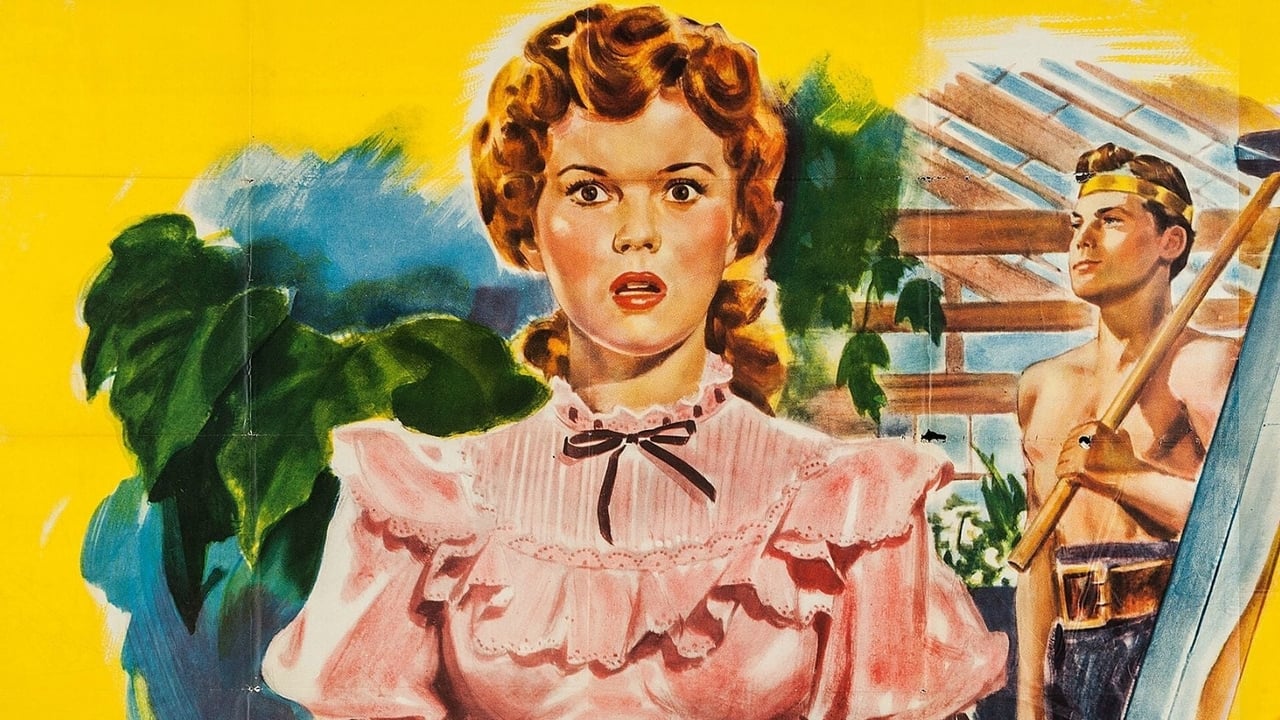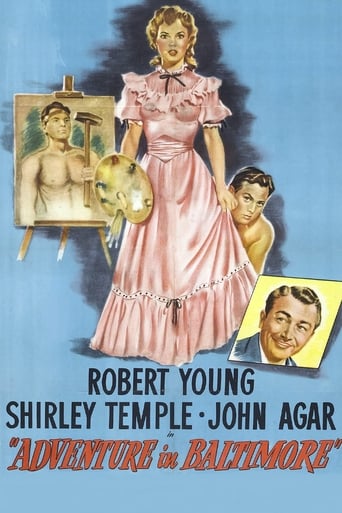

Really Surprised!
... View MorePerfectly adorable
... View MoreAlthough it has its amusing moments, in eneral the plot does not convince.
... View MoreIt is both painfully honest and laugh-out-loud funny at the same time.
... View MorePlot-- A reverend's 1905 family must find a way to adjust to the eldest daughter's instincts for equality at a time when women were denied many opportunities. Meanwhile, Dad may lose his chance to become a bishop because of town gossip over his daughter.Looks like the misleading title and Shirley's rebellious upstart were meant to provide some edge to her squeaky-clean image. However, the results are what could be expected of the Temple brand—a wholesome little family drama, on the order of Father Knows Best. As daughter Dinah, Shirley manages to keep her feminist instincts within appealing bounds; at the same time, she defies confining norms placed on 1905 women. The rebellious context is carefully calibrated so as to be acceptable to 1949 audiences without offending the values of that later time. Note how in the movie Dinah's desire for women's suffrage is endorsed, but not her inclination for a career as a painter. That accords with norms of the late-40's when women still weren't expected to have careers. Careers would come later in the 1960's.As Pastor Sheldon, Young is likably bland in the type role soon to define him. More importantly, as the voice of reason and church authority, he gives official approval to his daughter's actions. So the audience knows she's more than just rebellious— she's on the right track. On the other hand, too bad the studio didn't hire a more appealing swain than the dull- as-cement John Agar. But then he's certainly no competition for his then real life wife. On the whole, the movie tells us more about Temple's career and the social norms of two historical periods than anything else. However, I'm still wondering how this revealing slice of fluff escaped from RKO's dream factory that was then turning out noirs by the dozen.
... View MoreI'm not sure what kind of adventure folks were having in 1905 Baltimore, but it's clear to me that RKO was trying to cash in on a bit of the nostalgia gold that MGM found with Meet Me In St. Louis. There's no musical score in Adventure In Baltimore, but Shirley Temple taking the place of Judy Garland provides a nice wholesome image of a young woman who was questioning just what woman's place was in society as so many thousands of others were doing in America in 1905.Shirley's a preacher's kid and her father is an amused and tolerant, but slightly put out Robert Young. The film opens with her returning to Baltimore because she's been expelled from a Ladies Finishing School, the kind of places that would shortly go out of date and style. She's been espousing such radical ideas as woman's suffrage and she wants to be an artist.In addition to a slightly exasperated father, Shirley's also got a more than slightly exasperated young man who is interested in her in her then real life husband John Agar. One of the funniest scenes in the film is Agar at an oratorical society meeting delivering a speech expressing Temple's progressive ideas. The problem is she did not change the pronouns and poor Agar is making a big old fool of himself. Later on a 'scandalous' painting Temple does of Agar causes great concern and is used against Young who is being touted for the position of Bishop of the Episcopal Diocese of Baltimore.Robert Young was made up to look a great deal older than he was at the time the film was made. With his graying hair and with it curled the way it was, Young looks like Robert Donat as he was in Goodbye Mr. Chips. It made me think that Donat might have been who RKO had in mind originally for the plot. Nevertheless Young does fine in the role and his scenes with Shirley have some real tenderness to them.Adventure In Baltimore is not as good as Meet Me In St. Louis, but the film is nice family entertainment.
... View MoreIt is beautifully filmed by Robert de Grasse. And Robert Young's character is appealing and even admirable. This seems like a dry run for his most famous role, the title character in "Father Knows Best." Here he is a father in two ways: He has children, including Shirley Temple. And he is an Episcopal priest (under consideration for Bishop of his Diocese.) Shirley Temple is the main character. She is meant to be saucy and ahead of her time. But she's very hard to like. The escapade in which her boyfriend, John Agar, borrows a speech from her for a debating contest isn't admirable. And right here, it's hard to imagine that a priest would laugh off his daughter's involvement in such dishonesty.Then she paints Agar. She promises she will just use his body as a starting point -- no face. But the painting is exhibited in a show and everyone sees that she has painted him in a bathing suit. That would have been extremely risqué for 1905. What would be the equivalent 101 years later? Something on the Internet or in an X-rated video.All this while her father is being considered for Bishop. I wonder what Christopher Isherwood's original story was like. Maybe she was a forerunner to Sally Bowles. Here, however, she is sullen, pampered, and selfish.
... View MoreAfter a few successful teen-age roles (and a couple of ill-fated ones), Shirley's uneven career as a young lady was not helped by this routine romantic comedy of the early 1900s in which she plays a rebellious daughter of a minister (Robert Young) with shocking ideas about love. As a crusader for women's suffrage, Shirley seems more petulant than feisty, playing a girl who crusades for women's suffrage. Nice to see Robert Young in his pre-Father Knows Best days. The film has an attractive look with handsome photography and a good feel for the period atmosphere, but the script is too lightweight to carry much conviction. Pleasant enough if you want to see what Shirley Temple looked like at this stage in her career. She had three more "clinkers" to go before quitting the screen.Her then-husband John Agar wasn't much help--here he comes across as a wooden actor, not well suited to comedy. Pleasant enough film, but just a trifle.
... View More